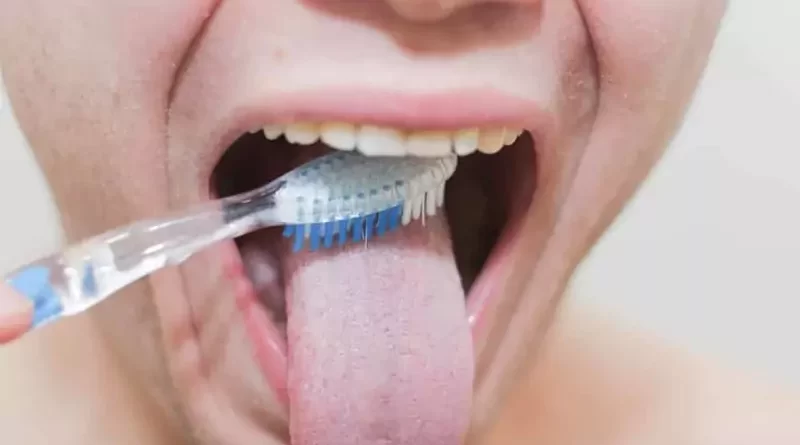How to Clean Tongue: Brushing vs. Scraping
Most patients who complain of bad breath have food residues and bacterial plaques located between the recesses (crypts) and protrusions (papillae) on the surface of the tongue. In this respect, the reason for their bad breath is mostly these deposits on the back of the tongue. But, how to clean the tongue?
How to Clean Tongue: Tongue Scraper vs Toothbrush
Tongue Scraping is Useless
The recesses and protrusions on the back of the tongue cause odor by taking food residues and bacteria between them. For this reason, we need to brush the surface of the tongue to clean them.
It is pointless to scrape the surface so that we can remove the impurities that settle between the recesses and protrusions on the back of the tongue. Because when we scrape the surface of the tongue, these protrusions lie down and push the dirt in the recesses deeper and cover them.
These protrusions that you scrape and lay down will return to their previous state after a while. But these impurities in the recesses that we cannot clean by scraping continue to smell from where they left off. Accordingly, scraping the surface of the tongue is not a suitable method for cleaning the back of the tongue.
Tongue Scraping is Unfavorable
Another very important issue about tongue scraping is that there are serious claims that tongue scraping causes cancer. An experiment was conducted showing the formation of tongue cancer as a result of scraping the tongues of mice and the result was positive. This research has led to the emergence of important claims about the inconvenience of scraping the tongue. Therefore, it is not healthy to choose tongue scraping as a tongue cleaning method to get rid of bad breath.
Tongue Brushing is Healthier
In order to thoroughly clean the back of the tongue, we need to brush the tongue surface with the toothbrush that we brush our teeth with or with tongue brushes (eg, Peak Essentials The Original TUNG Brush Professional and Dentek Orabrush Tongue Cleaner) special for cleaning the tongue. While brushing the tongue, the bristles of the brush enter between the hair-like projections on the surface of the tongue and clean the impurities more effectively. Accordingly, it is more appropriate to choose to brush the tongue instead of scraping it.
Conclusion
Considering all the above, we can say that scraping the tongue is an inconvenient method. Instead of tongue scrapers, it will be safer to brush the tongue after each brushing. We can do this with either a toothbrush or a tongue-specific brush. It should not be forgotten that scraping the tongue is unnecessary, inappropriate, and even harmful.
References
American Dental Association, MouthHealthy: “Tongue Scrapers”
Cleveland Clinic: “Does Tongue Scraping Actually Work, and Should I Be Doing It?”
Mayo Clinic: Diseases and Conditions, “Bad breath: Could a tongue scraper help?”
PubMed: “Halitosis: a new definition and classification”
PubMed: “Tongue-cleaning methods: a comparative clinical trial employing a toothbrush and a tongue scraper”

